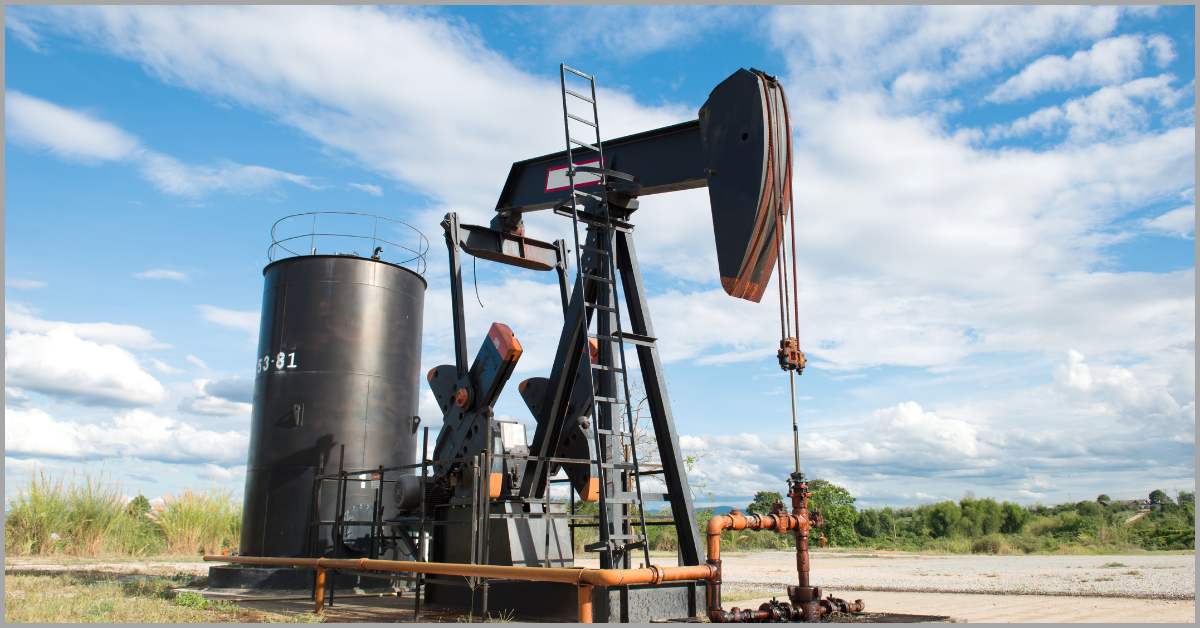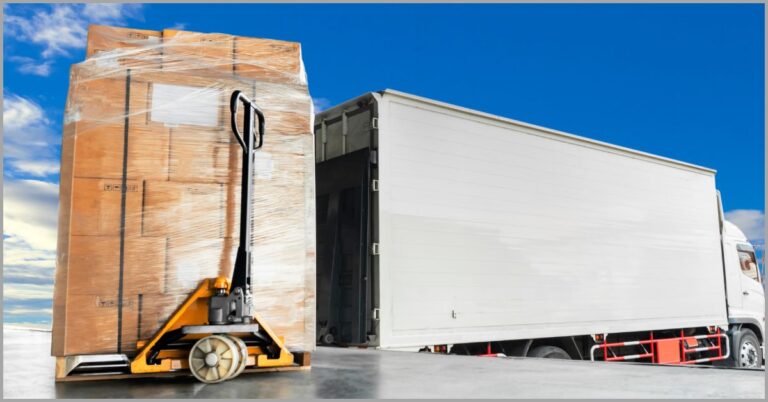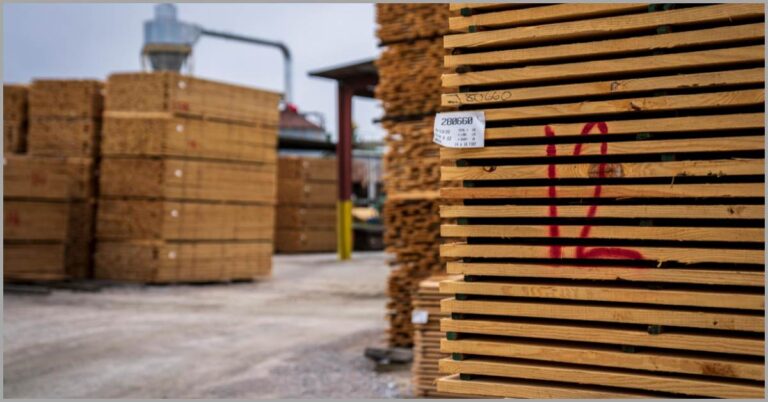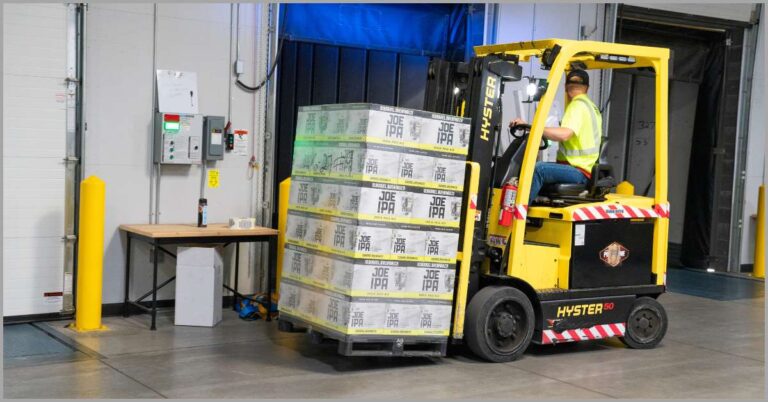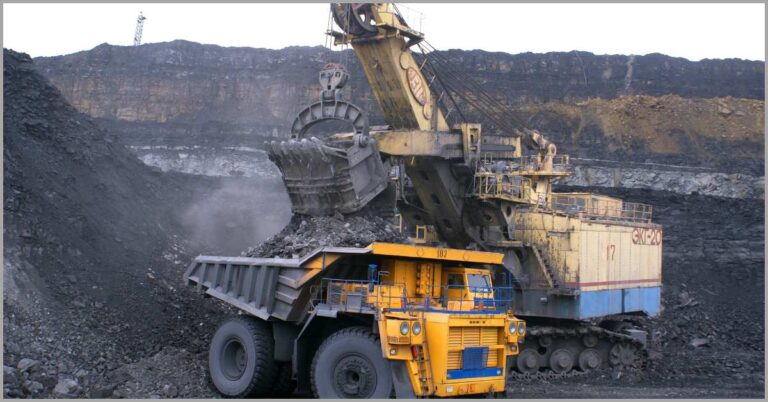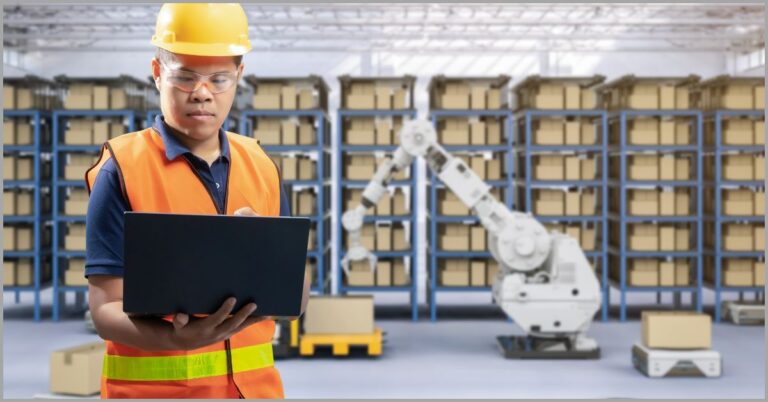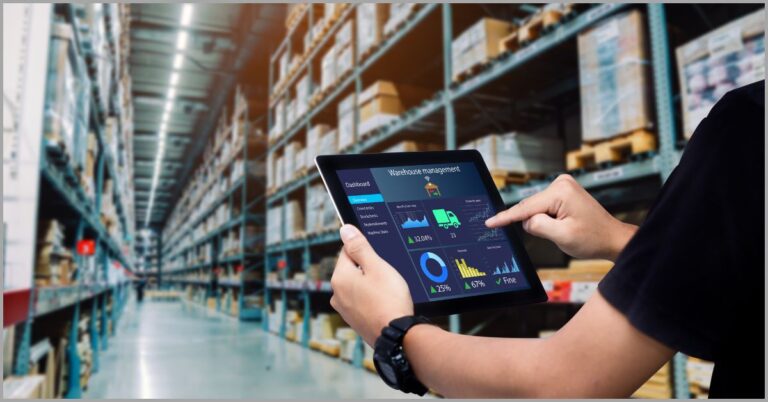What is Oil Transloading? How to Efficiently Move Crude Oil to the Refinery
Considering oil transloading for your business?
Searching for oil, just like coal transload shipping, entails traveling to remote locations.
If you lack an efficient shipping strategy, physical barriers and the lack of direct pipeline transmission can hinder the exploration of new oil fields.
A DNV survey revealed 72% of oil organizations rate exploring new oil fields as important. However, infrastructural challenges often obstruct these projects.
By transloading oil, you can reach far-flung and previously unbreached locations with ease. It’s a strategy that enables you to use alternative transportation to compensate for any infrastructural gaps in your mining site.
The result is an expedited and more effortless shipping process that enables you to get crude oil to the refinery and, ultimately to your market, on time.
If you’d like to explore other beneficial shipping options for your business, check out this article I wrote about drayage vs transloading for efficient freight forwarding.
In this article, we’ll discuss what oil transloading is and how to efficiently move crude oil to the refinery to turbocharge growth and revenue for your business.
Let’s get started.
What is oil transloading?
So what does transloading oil entail?
Oil transloading is the process of transferring oil between truck tankers and rail tankers. It enables you to move oil from one place to another using different forms of transportation.
With oil often located deep underground in areas with limited infrastructure, transloading enables you to use alternative means of transportation.
So even if the oil refinery is located hundreds of miles away in a region underserved by road networks or even on an oil platform in the ocean, transloading still saves the day. It enables you to bridge the gap between the refinery and your mining site.
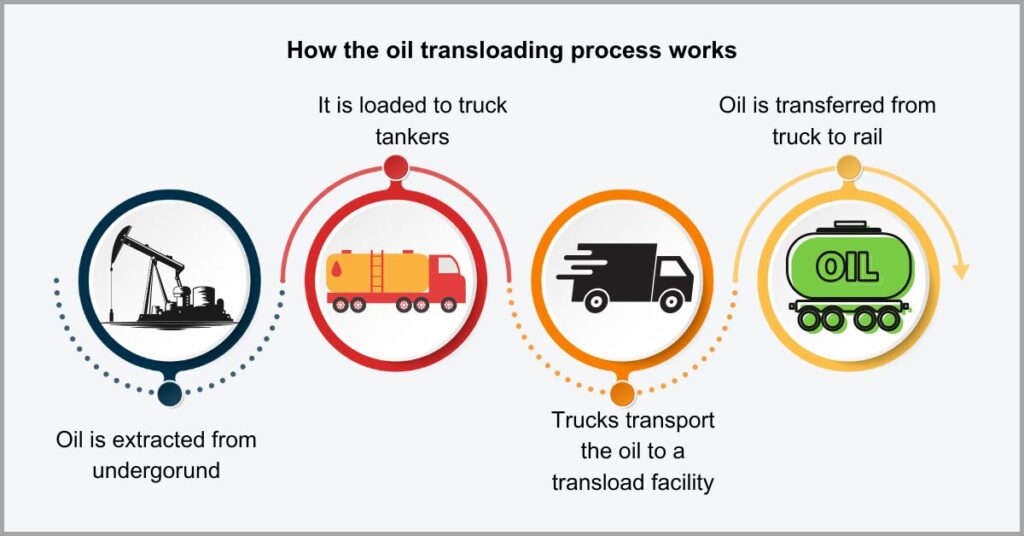
Once you get the oil to your transloading facility next to the final destination, you can now transfer the cargo using rail to truck transloading. So you’ll transfer the oil from rail to truck tankers to complete the delivery.
Alternatively, transloading also enables you to take advantage of overseas transport if you’re mining oil in the ocean. It enables you to siphon and transfer the commodity between overland transport tankers and an ocean vessel’s tanks.
This ship will typically have special infrastructure such as a purpose-built barge, for example, to enable the safe transfer and transportation of the commodity.
You can also perform transloading once more to switch your crude oil between different ocean vessels. It’s a strategy that’s extremely cost-efficient when you’re moving vast amounts of oil across markets or regions that lack direct port connections.
Equipment necessary for transloading oil
Transloading oil brings unique concerns.
Oil is a highly flammable liquid bulk material, for example, which means that you require special equipment in order to enable the safe transfer of the commodity between different modes of transportation.
Otherwise, failing to use the right tools for transloading oil can compromise worker safety by creating hazards that increase the risks of fires & explosions.
Some of the tools you’ll require include high velocity transload pumps, complete with a metering system. These enable the safe, quick and precise transloading of oil in between rail and truck tankers to enable switching between different transport modes.
That said, other important transloading equipment that you may need also include spill containment pans for minimizing the spread of oil spills. You’ll also need various personal protection equipment for workers in line with OSHA specifications.
Digital equipment is also just as important as the physical tools, which is why I also recommend using a transload management software to improve logistics efficiency.
Click here to book your free transloads.co demo to see our software in action.
We’ll walk you through how our platform can help you track inbound & outbound oil shipments and increase efficiency. You’ll also discover other essential features such as inventory management, which can help you to increase accuracy and productivity.
Tips for safe and efficient oil transloading
1. Set up a transload terminal
So what is a transload terminal?
A transload terminal is the facility where you carry out transloading operations. When you’re building your transload terminal, you need to think about infrastructure that you’ll need to meet the storage, handling and shipping needs that come with handling oil.
Without the right infrastructure, oil transloading will be hampered by inefficiencies that slow down shipping and affect oil production as well.
That said, the top goal for 49% of oil and gas companies is increasing production, according to a Statista survey. A strategic transload yard can accelerate midstream activities during oil production such as transportation and storage.
As a result, you can streamline operations to scale production sustainably.
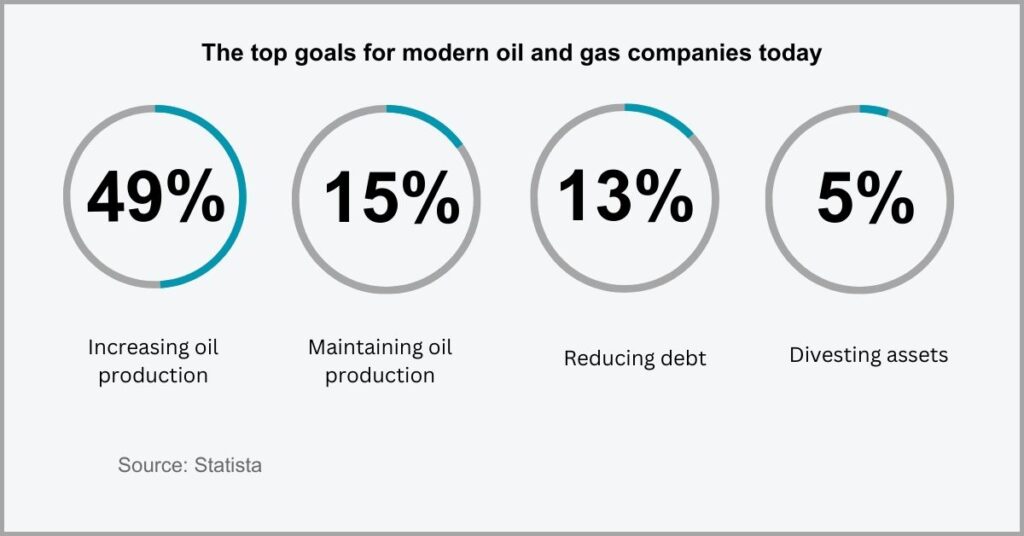
When setting up a facility for transloading oil, it’s important to choose a strategic location. One that’s preferably served by rail carriers that aren’t too far away from your oil mining site and the oil refineries you’re seeking to reach.
In terms of infrastructure, you also want to provide portable mobile access platforms that enable transloaders to reach the top of rail or truck tankers with ease.
Click here to get our premium support services to help you set up your facility.
We can assist you in key aspects, such as sourcing skilled transload workers & optimizing facility operations to boost efficiency and throughput during oil transloading.
2. Draft spill containment measures
Oil spills can occur during transloading.
They can arise as you transfer oil from rail to truck tankers, and even from transload pumps, pipe leakages and other equipment that you rely on for the process.
When oil spills occur, they pose huge environmental risks, while they can also lead to violation of important regulations, thereby attracting legal repercussions.
Unfortunately, the average tanker experienced 6.8 oil spill incidents in 2021, according to a study by ITOPF. It may sound like such a small number but some of these incidents involved spillages that exceeded 700 tons of oil.
So creating spill containment measures like a spill containment plan is very important.
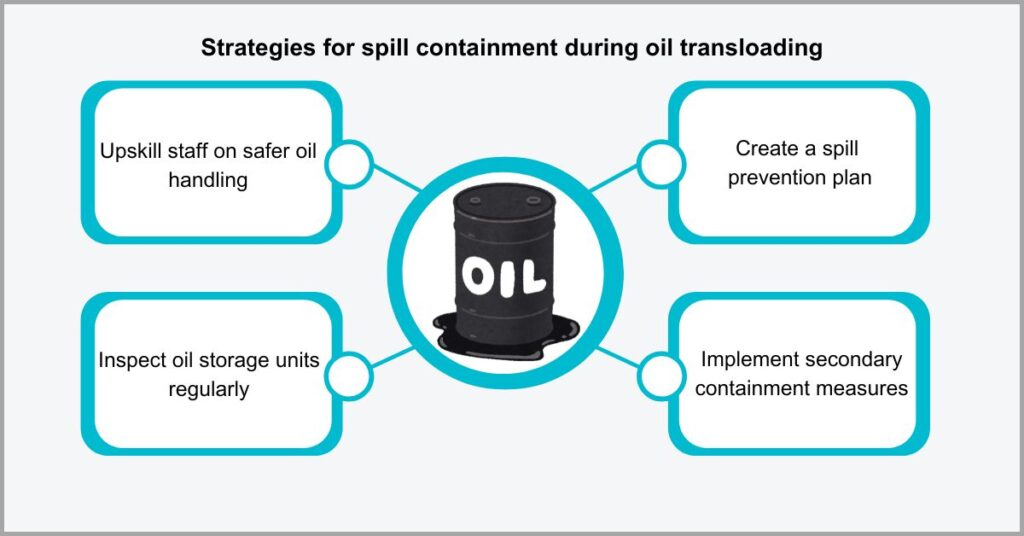
But what is a spill containment plan?
A spill containment plan is a document that defines measures for preventing & handling oil spills, and it’s among essential transloading spill containment requirements set by the US EPA and OSHA.
This document should indicate the potential sources of oil spills in your transload facility such as oil barrels and tanks. It should also describe preventative measures you take to minimize the risk of spills occurring in the first place.
That said, you also need to put in place secondary containment strategies, like spill pallets, pans and trays, for example. These will help you to enhance oil transloading safety and also improve regulatory compliance for your business.
3. Leverage mobile tanks
What is a mobile tank in shipping?
A mobile tank is a detachable container you can use to store crude oil and transfer it between various transport modes without pumping the oil out of the container.
That said, crude oil transloading involves the transfer of large volumes of liquid, with storage and material handling inefficiencies increasing your oil lifting costs.
A survey by Deloitte revealed that 23% of oil and gas companies are struggling to streamline their oil lifting costs. If these expenses rise too high, they can increase your cost of production per barrel and cause losses.
With mobile tanks, you can lower production costs by reducing material handling needs.
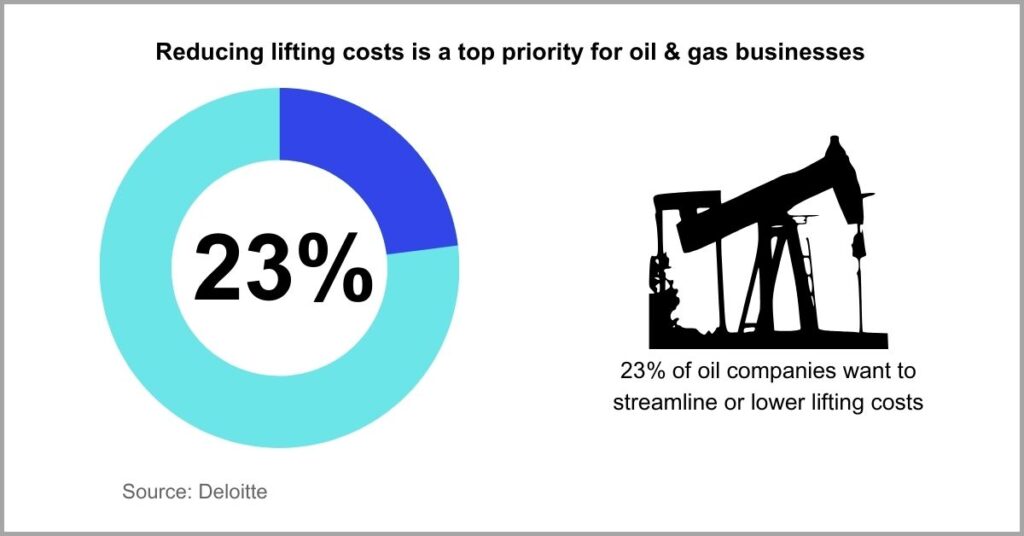
That said, these storage units also make transloading more efficient.
Instead of siphoning your crude oil from truck tankers to rail tankers, you can simply detach the mobile tanker and place it onto a flatbed railcar. This enables the seamless transition from road to effective railroad logistics at your facility.
So with these units, you can load oil into tankers once at the mining site, and unload it once at the refinery as well. In other words, it reduces the number of loading and unloading tasks during the oil shipping processes.
Besides saving you time and accelerating transload operator productivity, this strategy of transloading also lowers your overall lifting costs to improve profitability.
4. Use a transload management software
Transloading oil can attract complex logistics.
This is because you’ll probably be transferring oil between multiple truck tankers and rail tankers, with each shipment attracting its own individual logistics needs that you need to manage separately.
When you have inefficient oil transloading logistics, delays can arise that hold up drivers, attracting detention fees and penalties from trucking companies.
In fact, an OOIDA study revealed that 72% of oil truckers are held up for three or more hours during loading operations. During such instances, you’ll have to foot detention fees which only make oil shipping even more expensive.
It is for this and many other reasons why I recommend investing in software solutions.
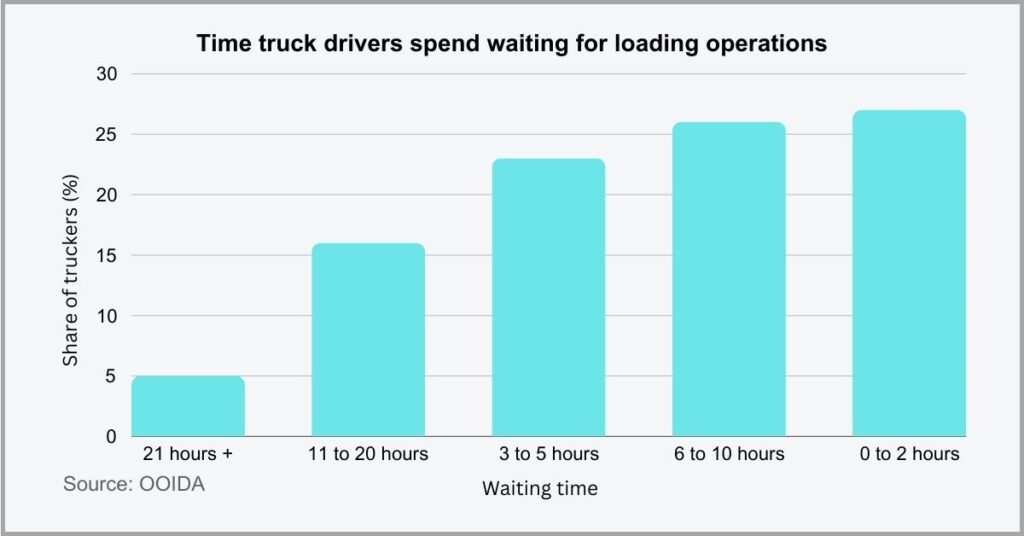
So how can a transload management software help?
One important capability that you get is electronic shipping documents & templates. These enable you to digitize contracts with carriers if you’ll be outsourcing your trucking needs, to protect against cargo ownership disputes & accelerate transloading.
On top of that, other key transloading software features that you also get with the right tools include full lifecycle shipment tracking. This makes it easy to manage your inventory, enabling you to reduce errors and instances of inventory fraud.
A great transloading tool will also enable you to reduce your worker management burden and improve collaboration to streamline logistics during oil transload shipping.
5. Automate key tasks
Want to improve efficiency when transloading oil?
Then automation is a great option to consider to lower the amount of iterative work, which is very important given there’s a huge shortage of skilled transload operators.
By increasing your labor needs, manual-driven transloading processes can drive up operational costs for your business, which dulls your competitive edge.
A survey by EY revealed that 41% of gas and oil executives plan to invest more in digital and automation technologies because they can help lower oil prices. Additionally, a huge number plan to maintain what they’ve already invested.
With automation, you decrease your labor needs and reduce overall logistics costs for your oil and gas business.

There are many existing transload tech innovations in logistics you can lean on.
For example, proven transload yard management tools like our very own transloads.co can automate real-time inventory monitoring as well as inventory auditing. This frees up your transload operators to focus on other core tasks of transloading oil.
You can also use automation technologies like the Internet of Things to automate the detection of oil and gas leakages. This reduces manual intervention in hazardous oil shipping and transloading scenarios, thereby improving worker safety and well-being.
Moreover, you can turn to back-office automation technologies to improve efficiency for tasks like inventory, invoice and payroll management for your transloading facility.
The top benefits of transloading oil
I. Fewer shipping delays
It’s possible that you mine oil in a remote location.
This site may be so far away from important transport amenities and road infrastructure that you need to move crude oil to the refinery for processing.
So, coupled with the biting truck driver shortages, relying on a single mode of transportation like trucking can really throw off your schedule.
A survey by IRU revealed that up to 75% of logistics businesses have truck driver shortages. This greatly disrupts shipment timelines in the oil and gas industry, because shippers have to wait long periods for trucks to be available to ship their loads.
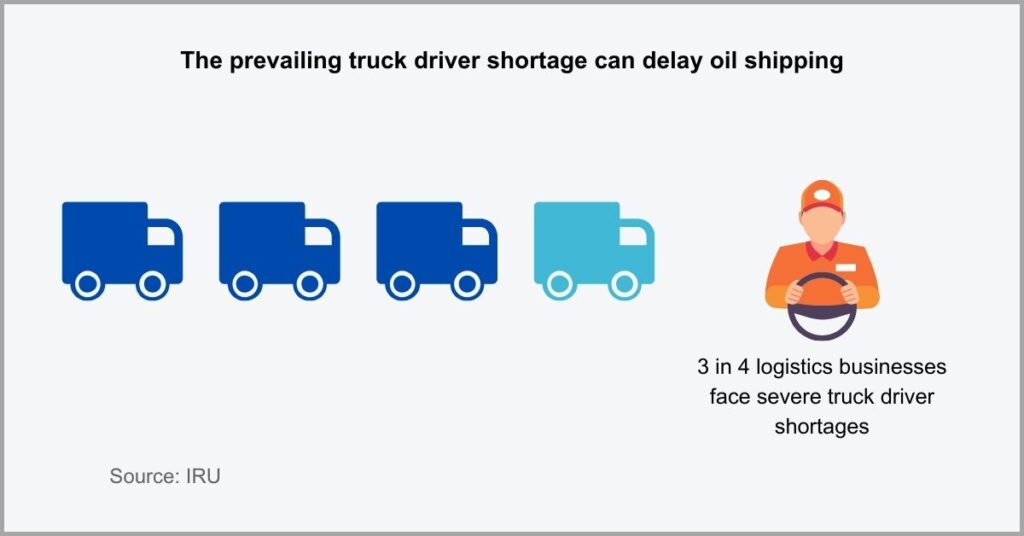
Transloading is a great strategy to avoid shipping delays.
For instance, if long distance trucks or drivers are unavailable, you transfer crude oil to rail instead. You can also perform effective railcar switching to transfer your oil between different rail companies in case one carrier is unable to complete the entire trip.
Overall, through transloading, you can reduce waiting times and other delays across your supply chain, enabling you to move crude oil to the refinery faster.
It’s also possible to transload and store reserve oil in strategic warehouses when you have surplus supply, thereby improving availability in case of surges in demand.
II. Improved oil revenue
Keen to improve revenue for your oil business?
Success in the oil and gas industry also greatly depends on diversifying your market and operations beyond the conventional aspects of shipping, refining and distribution.
If you don’t diversify your oil business, you’ll limit your market base and possibly even lose your competitive advantage, leading to lost sales and revenue.
It’s crucial to note that 70% of large corporations operate in at least two different industries, according to a study by McKinsey. Through diversification, they’re able to tap into new markets, lower their business risks, and generate more revenue as well.
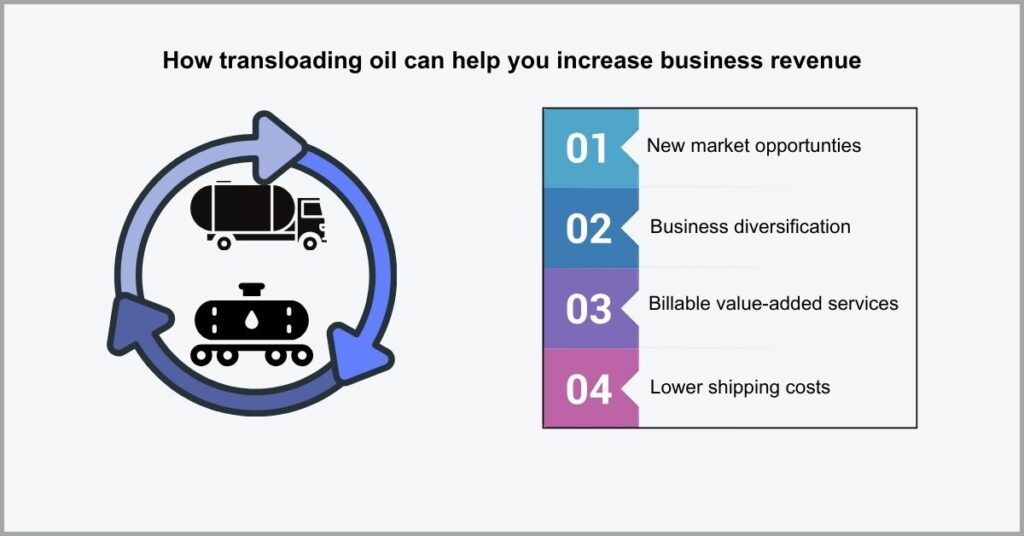
Transloading enables you to diversify your oil business.
For example, you can start a warehouse for transloading oil and extend this offer to other players and customers in your industry. This creates supplement transloading income separate from other revenue streams for your oil and gas business.
Beyond that, you can also tap into other profitable warehouse business ideas for your transloading facility like freight forwarding to help you diversify your earnings more.
It also enables you to offer value added services that you can charge extra for such as packaging oil into barrels or shipping totes and reworking the freight overall.
III. Better eco-friendliness
Are your oil shipping operations eco-friendly?
Operating in the oil and gas industry attracts huge scrutiny from governments and other regulators who often view your business as a huge threat and source of pollution.
Aside from creating compliance hurdles, poor eco friendliness can also compromise your relationship with customers and supply chain partners.
In 2022, at least 5.86 billion metric tons of greenhouse gas emissions came from the production & transportation of oil and its products, as per a Statista survey. It’s for this reason that regulators are increasingly tightening regulations for oil & gas businesses.
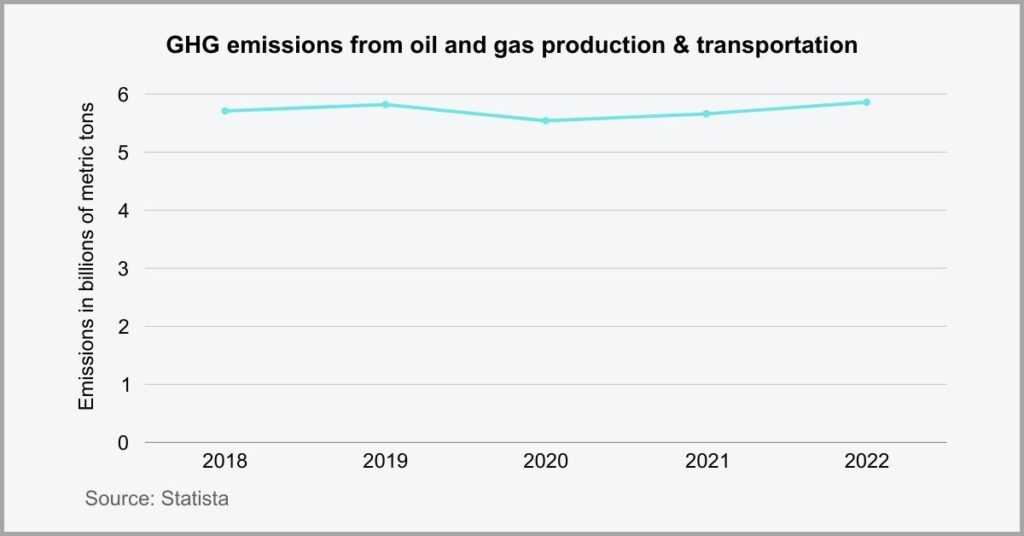
However, you can lower your carbon footprint by transloading oil.
It enables you to use more fuel efficient transportation options like rail and ocean vessels, thereby minimizing carbon emissions during your shipping processes.
Other ways that oil and butane transload shipping improve eco-friendliness is by increasing your freight capacity so that you’re able to move more oil at a time.
With alternative transport modes like rail able to transport up to 4 truckloads or more worth of oil in one rail car, you’ll make fewer trips to the refinery. This further reduces greenhouse gas emissions and boosts your business’s eco-friendliness and reputation.
Conclusion
Trucks are a popular way to move crude oil.
Once you dig it up, you can load oil to truck tankers to take it to the refinery.
However, transporting oil by truck tankers alone across long distances is very expensive, and it greatly limits profit margins for your oil and gas business.
A Trinity Logistics survey showed that 50% of shippers are struggling with high transportation costs. One key reason for this is using expensive oil carriers.
Transloading oil enables you to switch between road and rail to boost fuel efficiency and increase carrier capacity to lower your shipping expenses. If you’d like to make the process even more cost-efficient, I recommend transload management software.
Click here to book your free transloads.co demo to learn more about our software.
We’ll show you how it can help you manage oil shipping logistics centrally and coordinate transloading operations better to cut cost and improve shipping speed.

